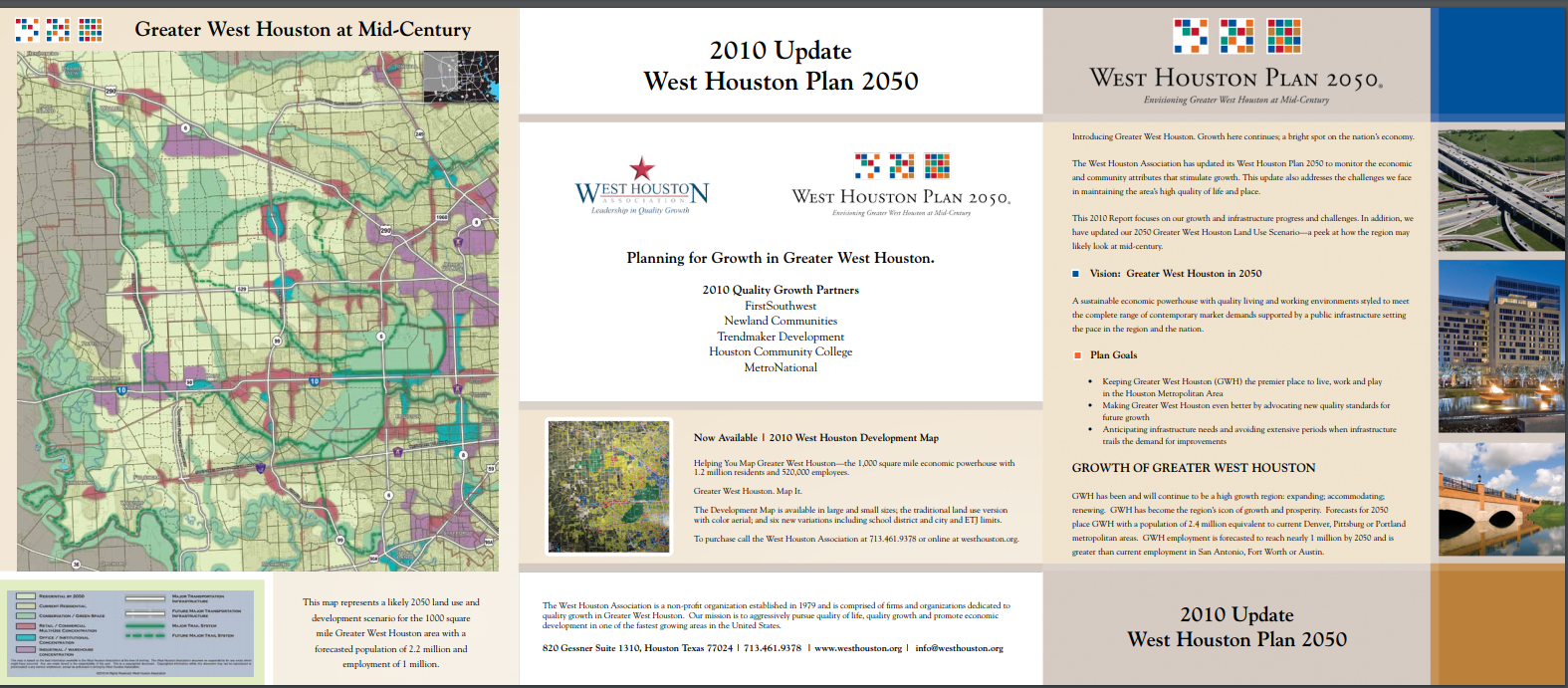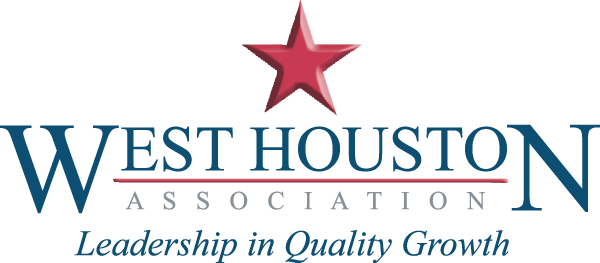
![]() Introducing Greater West Houston. Growth here continues; a bright spot on the nation’s economy.
Introducing Greater West Houston. Growth here continues; a bright spot on the nation’s economy.
The West Houston Association has published the West Houston Plan 2050 2010 Update (PDF Format) of the 2007 West Houston Plan 2050 (“Original Plan 2050” tab above) to monitor the economic and community attributes that stimulate growth. This update also addresses the challenges we face in maintaining the area’s high quality of life and place.
This 2010 Update focuses on our growth and infrastructure progress and challenges. In addition, we have updated our 2050 Greater West Houston Land Use Scenario – a peek at how the region may likely look at mid-century.
![]() Vision & Goals of West Houston Plan 2050
Vision & Goals of West Houston Plan 2050
A sustainable economic powerhouse with quality living and working environments styled to meet the complete range of contemporary market demands supported by a public infrastructure setting the pace in the region and the nation.
- Keeping Greater West Houston (GWH) the premier place to live, work and play in the Houston Metropolitan Area
- Making Greater West Houston even better by advocating new quality standards for future growth
- Anticipating infrastructure needs and avoiding extensive periods when infrastructure trails the demand for improvements
![]() Growth of Greater West Houston
Growth of Greater West Houston
GWH is a 1,000 square mile high growth portion in the west of the Houston region. It has and will continue to expand, accommodate and renew. It has become the region’s icon of growth and prosperity. New estimates based upon metropolitan totals for 2050 place GWH with a population of 2.4 million equivalent to current Denver, Pittsburg or Portland metropolitan areas. Employment is forecasted to reach nearly 1 million by 2050 and is greater than current employment in San Antonio, Fort Worth or Austin.*

From those modest beginnings with a population of about 184,000 and employment of 17,000 in 1970, Greater West Houston has emerged with a population of over 1 million and an employment base of nearly 500,000.
![]() Key Infrastructure Focus Areas-An Update on Progress & Challenges
Key Infrastructure Focus Areas-An Update on Progress & Challenges
Forecasted growth will challenge a wide range of infrastructure upon which GWH will depend. The 2010 report is an update on infrastructure areas that are key drivers of economic growth and quality of living. Click on the topic area for a review of their status:
